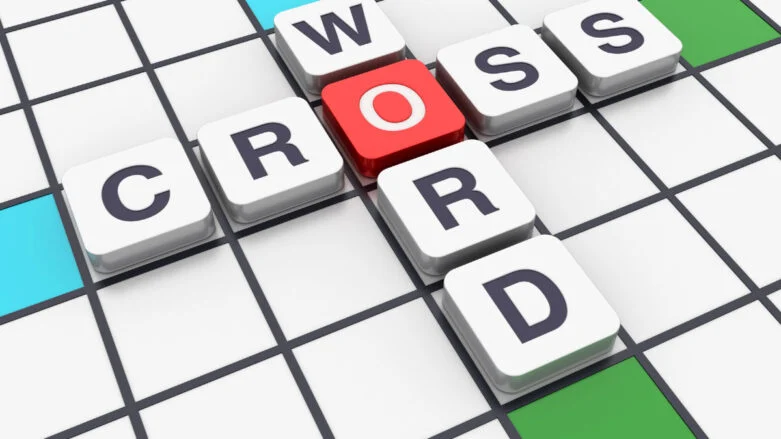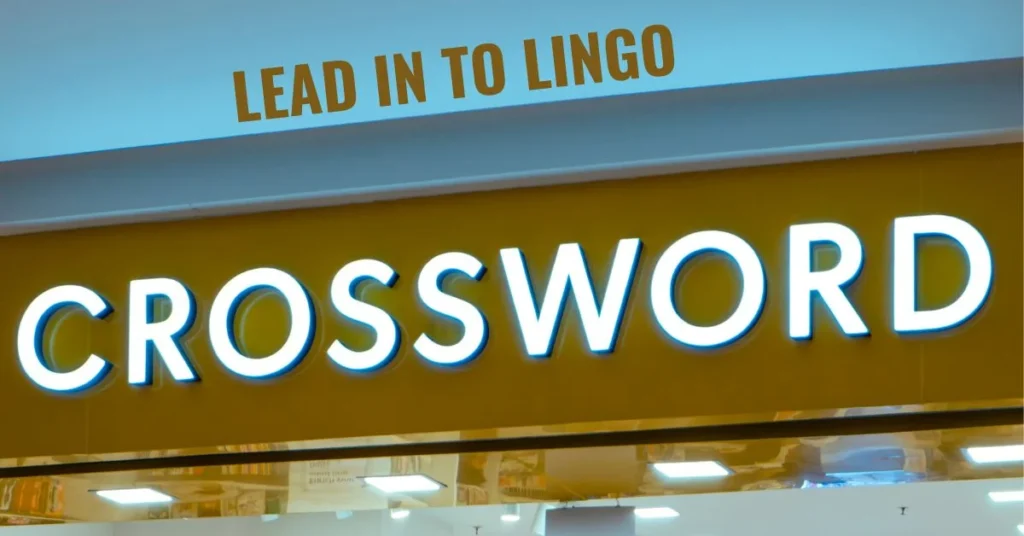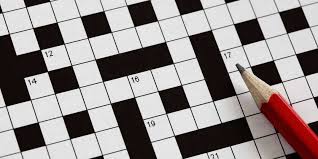Mastering the Lingo: Your lingo nyt crossword Clues

vSolving the lingo NYT crossword can be a fun and challenging experience. The clues often use special words or phrases that might seem tricky at first. But don’t worry, with a little practice, you can learn the lingo and become a crossword master!
The lingo NYT crossword uses clever wordplay and unique language. This guide will help you understand the common terms and phrases you’ll encounter. Let’s dive into the world of crossword puzzles and make solving them easier and more enjoyable!

What is the Lingo NYT Crossword?
The lingo NYT crossword is a special type of puzzle found in The New York Times. It uses clever words and phrases to make the game more fun and challenging. Many people love solving these puzzles because they make you think hard.
In each lingo NYT crossword, you will find clues that might seem tricky at first. These clues use words that are common in the world of crossword puzzles. Learning this lingo can help you solve the puzzles more easily.
Many crossword enthusiasts enjoy learning the special lingo used in these puzzles. It feels like a secret language that only crossword solvers know. With practice, you too can become an expert at solving the lingo NYT crossword.
Why the Lingo NYT Crossword is Popular
The lingo NYT crossword is popular because it is both fun and challenging. Many people enjoy the mental workout that comes with solving these puzzles. It keeps their minds sharp and active.
One reason people love the lingo NYT crossword is because of the clever clues. These clues often include puns and wordplay that make solving the puzzle more enjoyable. It feels great to finally figure out a tricky clue.
Additionally, solving these puzzles can be a social activity. Friends and family can work together to solve the crossword. This makes the lingo NYT crossword a great way to bond and have fun together.
Basic Terms in Lingo NYT Crossword Puzzles
In the lingo NYT crossword, there are some basic terms you should know. One common term is “across,” which means the answer goes from left to right. Another is “down,” meaning the answer goes from top to bottom.
Another important term is “clue.” A clue is a hint that helps you find the answer. Clues can be tricky, so learning the lingo helps a lot. The word “fit” is a good example of a crossword term, meaning a fashionable look.
Knowing these basic terms can make solving the lingo NYT crossword easier. With practice, you will become familiar with more terms and improve your solving skills.
Tips for Solving Lingo NYT Crossword Clues
To solve the lingo NYT crossword clues, start with the easy ones first. Look for clues that you know right away. Filling in these answers can help you figure out the harder clues.
Another tip is to think about the wordplay. The lingo NYT crossword often uses puns and double meanings. Try to see if the clue has a playful twist to it. This can give you a hint about the answer.
Lastly, don’t be afraid to take a break. If you get stuck, walk away for a bit and come back later. Sometimes, a fresh look can help you see the answer more clearly.
Common Lingo Used in NYT Crosswords
The lingo NYT crossword has some common words and phrases that appear often. One example is “abbr,” short for abbreviation. Another is “anagram,” where the letters of a word are scrambled to form another word.
Knowing these common terms can make solving the lingo NYT crossword easier. For instance, if you see “abbr” in a clue, you know the answer will be an abbreviation.
Practicing these common terms can help you become a better crossword solver. The more familiar you are with the lingo, the faster you will be able to solve the puzzles.
Step-by-Step Guide to Solving Lingo NYT Crossword
To solve the lingo NYT crossword, start by reading all the clues. Find the ones you know right away and fill them in. This can help you get a good start on the puzzle.
Next, look at the clues that have short answers. These are often easier to solve. Filling in these answers can help you figure out the longer, more difficult clues.
Lastly, take your time and enjoy the process. The lingo NYT crossword is meant to be fun and challenging. If you get stuck, don’t worry. With practice, you will get better at solving these puzzles.
Why Learning Crossword Lingo is Helpful
Learning the lingo NYT crossword terms can make solving puzzles much easier. It’s like learning a new language that helps you understand the clues better. This can make the puzzle-solving experience more enjoyable.
Knowing the lingo also helps you solve puzzles faster. When you recognize common terms and phrases, you don’t have to spend as much time figuring out each clue. This can make solving the lingo NYT crossword more efficient.
In addition, learning the lingo can boost your confidence. As you become more familiar with the terms, you will feel more capable of tackling even the toughest puzzles. This can make solving the lingo NYT crossword a rewarding hobby.

Crossword Solvers’ Favorite Lingo Explained
The lingo NYT crossword includes some favorite terms among solvers. One popular term is “etui,” which is a small case for needles. Another favorite is “oleo,” a word for margarine.
Solvers often enjoy finding these familiar terms in the lingo NYT crossword. It feels like seeing an old friend in the puzzle. These words often have unique spellings that make them stand out.
Understanding these favorite lingo terms can help you feel more connected to the crossword community. You’ll start to recognize the patterns and themes that appear in many puzzles. This can make solving the lingo NYT crossword even more fun.
How to Practice Lingo NYT Crossword Puzzles
Practicing the lingo NYT crossword puzzles regularly can help improve your skills. Start by solving puzzles with easy or medium difficulty. This can help you get used to the types of clues and answers you’ll encounter.
You can also practice by learning new vocabulary words. Many crossword clues use uncommon or tricky words. Expanding your vocabulary can make it easier to solve the lingo NYT crossword.
Another way to practice is by joining a crossword puzzle group. Many people enjoy solving puzzles together and sharing tips. This can make practicing the lingo NYT crossword more social and enjoyable.
Strategies for Mastering Lingo NYT Crosswords
Mastering the lingo NYT crossword puzzles involves using effective strategies. First, start with the clues that seem easier or familiar. This builds confidence and fills in parts of the puzzle quickly. Next, look for clues that might have multiple meanings or wordplay. These clues often require thinking outside the box.
Another strategy is to scan the entire puzzle before starting. This lets you see how clues might relate to each other. If a clue remains unclear, skip it and come back later. Sometimes solving other clues helps with the tough ones.
Lastly, enjoy the process. Solving the lingo NYT crossword is like a game. It’s challenging but rewarding when you finish. With practice, these strategies can turn solving puzzles into a fun hobby.
The Evolution of Crossword Lingo Over Time
The lingo NYT crossword has evolved since its first puzzle in 1942. Early puzzles used simpler language and straightforward clues. Over time, puzzles became more complex. Constructors started using puns, wordplay, and references from popular culture.
The lingo in lingo NYT crossword puzzles reflects these changes. New terms and phrases enter puzzles regularly. Solvers adapt by learning these new words and meanings.
Today’s puzzles blend traditional and modern lingo. They challenge solvers with diverse clues and word choices. Understanding this evolution helps solvers appreciate the rich history of the lingo NYT crossword.
Famous Themes in Lingo NYT Crossword Puzzles
Themes in crossword puzzles add excitement and challenge. One popular theme is wordplay, where clues hint at multiple meanings. Another theme is cultural references, like music or movies.
Constructors use themes to create cohesion in puzzles. Solvers enjoy themes because they add complexity and surprise. Finding a theme early can help solve other clues faster.
Themes in lingo NYT puzzles vary widely. Some are simple, while others require deep knowledge. Exploring different themes enhances the puzzle-solving experience.
Crossword Lingo: From A to Z
Learning the alphabet of lingo NYT crossword terms helps solve puzzles. A is for “across,” the direction of some clues. B is for “black square,” which separates puzzle sections.
C is for “clue,” the hint for finding an answer. D is for “down,” another direction of clues. E is for “easy,” describing some clues.
Each letter teaches a new term or rule. Knowing this lingo makes lingo NYT crossword puzzles easier. It also helps appreciate the craft of puzzle-making.
How to Decode Tricky Clues in Lingo NYT Crosswords
Tricky clues in lingo NYT crossword puzzles need careful decoding. Start by reading the clue multiple times. Look for words that could have double meanings or puns.
Next, consider the puzzle’s theme or pattern. Sometimes clues relate to each other or follow a sequence. This can provide hints for solving.
If a clue still stumps you, try filling in nearby answers. This might reveal letters that help with the tough clue. Patience and persistence are key to decoding tricky lingo NYT crossword clues.
Fun Facts About NYT Crossword Lingo
Lingo NYT crossword puzzles have fun facts that add to their charm. Did you know the term “crossword” first appeared in 1913? It described a puzzle with intersecting words.
Another fun fact is the record for fastest crossword solving. Some solvers finish puzzles in under a minute! This shows the skill and practice needed to excel at lingo NYT crossword puzzles.
Fun facts like these make solving puzzles more enjoyable. They also highlight the puzzle’s place in pop culture and daily life.
Common Mistakes to Avoid in Lingo NYT Crossword Puzzles
Avoiding mistakes in lingo NYT crossword puzzles improves solving skills. One common mistake is guessing without thinking. Rushed answers can lead to wrong entries.
Another mistake is sticking to one clue too long. If a clue seems impossible, move on and return later. This can provide fresh perspective.
Lastly, avoid using obscure words without checking the puzzle’s theme. Lingo NYT crossword puzzles often use common words with unique meanings. Learning from mistakes helps become a better solver.
Benefits of Solving Lingo NYT Crossword Puzzles
Solving lingo NYT crossword puzzles offers many benefits. It boosts memory and sharpens problem-solving skills. Regular puzzle-solving can even improve verbal and cognitive abilities.
The mental challenge of lingo NYT crossword puzzles keeps brains active. This is important for all ages, from children to older adults. It’s like a workout for the mind.
Enjoying puzzles also reduces stress and improves mood. Solvers find satisfaction in completing challenges. These benefits make lingo NYT crossword puzzles a rewarding pastime.
How to Build Crossword Lingo Skills
Building lingo NYT crossword skills requires practice and patience. Start with easier puzzles to learn basic terms and strategies. Gradually move to more challenging puzzles as skills improve.
Expand vocabulary by learning new words from puzzles. Look up unfamiliar terms to understand their meanings. This builds confidence in solving lingo NYT puzzles.
Joining crossword communities or clubs offers support and tips. Sharing experiences with other solvers enhances learning. Building skills takes time but makes puzzles more enjoyable.
Advanced Techniques for Solving Lingo NYT Crosswords
Advanced techniques for lingo crossword puzzles include rebus and pangram strategies. Rebus puzzles use single squares for multiple letters, adding complexity. Pangram puzzles include every letter of the alphabet at least once.
Other techniques involve recognizing wordplay and thematic clues. Solvers use these strategies to tackle the toughest puzzles. Advanced techniques challenge and sharpen puzzle-solving skills.
Learning and practicing these techniques improves success with lingo NYT crossword puzzles. It adds depth and excitement to the solving experience.
Crossword Lingo: Insider Secrets Revealed
Insider secrets of lingo NYT puzzles include constructors’ tricks and puzzle trends. Constructors create puzzles with clever wordplay and themes.
Secrets also include the art of clue-writing. Clues must be fair and challenging without being impossible. This balance makes lingo NYT puzzles engaging.
Knowing insider secrets enhances solving strategies. It reveals the creativity behind each puzzle. Solvers enjoy uncovering these secrets as they tackle new challenges.
The Art of Constructing Lingo NYT Puzzles
Constructing lingo NYT puzzles involves creativity and precision. Constructors choose words and clues carefully. They create themes that surprise and delight solvers.
The art includes balancing puzzle difficulty and enjoyment. Clues must be fair and solvable with thought. This craftsmanship defines lingo NYT puzzles.
Understanding the art enhances appreciation for puzzles. It shows the skill and effort behind each creation. Solvers and constructors share a passion for the art of crossword construction.

conclusion:
solving lingo NYT puzzles is not just a game—it’s a journey of learning and discovery. From mastering tricky clues to understanding puzzle themes, every step helps sharpen our minds and expand our vocabulary. The strategies we discussed, like starting with easy clues and building up to harder ones, are like puzzle-solving superpowers. They help us tackle challenges with confidence and enjoy the thrill of completing a puzzle.
Remember, the fun of NYT crossword puzzles lies in the process. Whether you’re a beginner or a seasoned solver, each puzzle teaches us something new. So, keep exploring, keep learning, and most importantly, keep having fun with words and clues. Happy puzzling!





